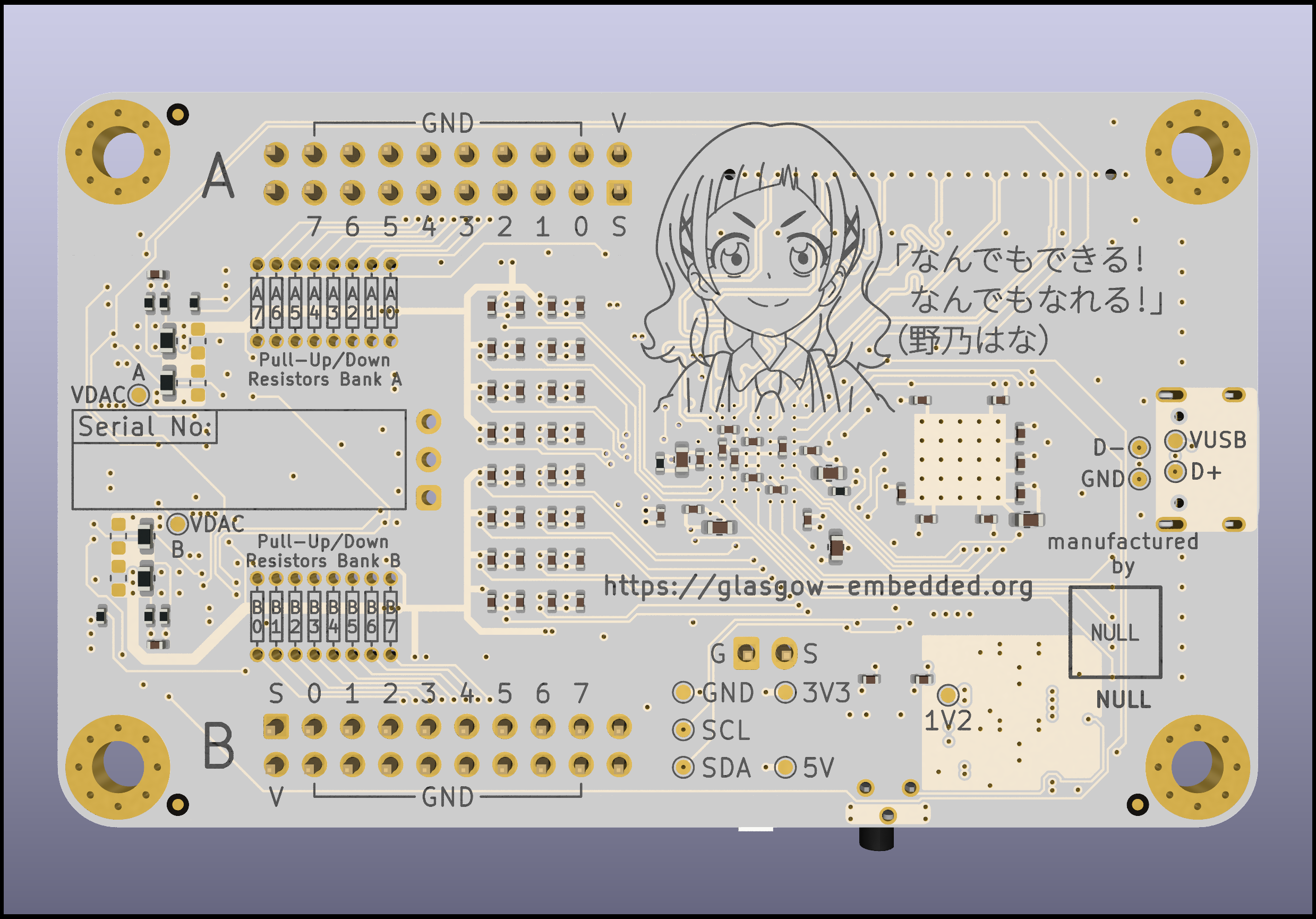Hardware revisions#
Hint
The devices manufactured by 1BitSquared and sold by CrowdSupply and Mouser use the hardware revision revC3.
The Glasgow hardware evolves over time, with each major milestone called a “revision”. Although all revisions are, and will always be supported with the latest software stack, they vary significantly in their capabilities, and the revision that is being used will determine which tasks can be achieved using the hardware.
Glasgow hardware revisions use the revXN format, where X is a revision letter (advanced alphabetically when major design changes are made) and N is a stepping number (incremented on any layout or component changes). For example, revC0 is the first stepping of revision C.
revD#
Revision D is a planned future revision that extends the I/O pin count to 32 without substantially changing other functions.
revC#
Revision C is the latest revision, first mass produced by 1bitSquared at stepping revC3. It provides 16 I/O pins with a data rate up to approx. 100 Mbps/pin (50 MHz) [1], independent direction control and independent programmable pull-up/pull-down resistors. The I/O pins are grouped into two I/O ports, each of which can use any voltage from 1.8 V to 5 V, sense and monitor I/O voltage of the device under test, as well as provide up to 150 mA of power. The board uses USB 2 for power, configuration, and communication, achieving up to 336 Mbps (42 MB/s) of sustained combined throughput.


Design and fabrication files are located in the Git repository:
revA, revB#
Revisions A and B have not been produced in significant numbers, have major design issues, and are therefore mostly of historical interest. Nevertheless, anyone who has one of the revA/revB boards can keep using them—forever.
Design and fabrication files are located in the Git repository: